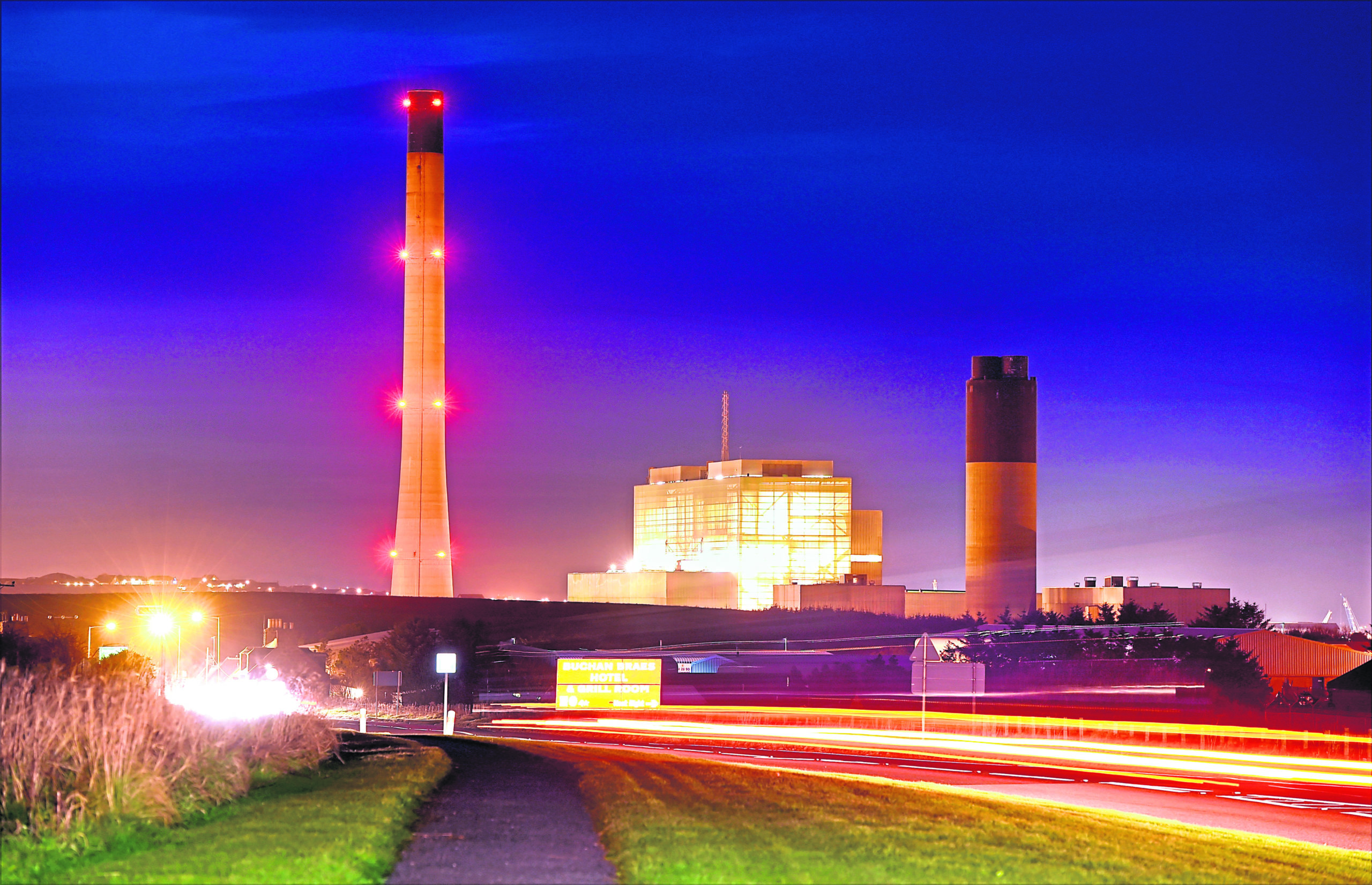
Bringing about the energy transition needs to make “economic sense” and be socially and environmentally sustainable, according to Shell’s chief technology officer.
Yuri Sebregts, the top scientist for the energy giant, said long-term solutions need to be “investible” and the move to a lower-carbon energy system “cannot happen based entirely on goodwill-funded developments”.
The Shell boss, speaking to EV at the Baker Hughes conference in Florence last month, said Shell’s near-term goals are to invest $2-3 billion annually on development of low-carbon technologies which could make an 8-12% return on investment and later be scaled up.
Sebregts said the company, which last year posted revenue of $345bn and as of January had invested $2.3bn in its New Energies venture since launching it in 2016, recognises a “partly critical audience” within society but also has a commitment to drive change.
He said: “Different people have different opinions so it’s not as if there’s one single opinion out there on what is the right thing to do.
“The energy transition needs to be environmentally sustainable, it needs to be socially sustainable, but it also needs to be financially sustainable.
“The energy transition cannot happen based entirely on goodwill-funded developments.
They have to make economic sense so we see our challenge as finding investible solutions that are affordable to customers, that move us to an energy system that is also socially and environmentally sustainable.”
Shell aims to reduce its own net carbon footprint by 20%, or thereabout, by 2035 and 50% by 2050.
This covers cutting greenhouse gases from its oil and gas extraction and refining operations and reducing emissions for fuels and other products sold to millions of customers, known as scope 3.
Sebregts said: “We’re allocating in the near-term between $2-3bn a year in this space. Initially, this is not cash-generative, but we’re looking to deploy this on investments that can yield between 8-12% returns.
“We need these investible returns to be able to later scale these solutions, otherwise it’s not going to happen. This is very challenging. It’s not easy but that is the task ahead of us.”
Shell has also linked these targets to how much their top executives are paid, becoming the first major energy company to do so in 2018.
However, Sebregts said it’s not all about the money. “We might be senior leaders but we’re individuals with concerns and anxieties about where this is all going,” he said.
“We’re deeply committed to making progress but, just to make sure that it is transparent, we also tied it to our remuneration so other people, who might not be able to look into our heads, can see that commitment.”
Shell wants to be a visible and “active participant” in the dialogue around changing the energy system.
However, what Sebregts describes as “not acceptable” is less energy being produced in order to provide cleaner energy.
He said: “Currently you find yourself in a policy debate where people talk about a trade-off between more energy and cleaner energy.
“If you don’t offer more energy to the world then billions of people will remain in energy poverty and have a very poor quality of life, so that is just not an acceptable trade-off to make.
“We have to have more and cleaner energy and doing both is only possible with technology progress. Current technologies cannot offer that. We need more technology development which, if you’re the CTO of a large company, is an exciting opportunity.”
CCS
Also at the Baker Hughes conference was Fatih Birol, executive director of the International Energy Agency (IEA), who said the world needs to harness all the innovations it can to meet climate goals, but it will be “impossible” to do so without carbon capture and storage (CCS).
Shell is already active in CCS with its Quest demonstrator project in Canada, as well as work at the Gorgon field in Australia and in Norway.
The firm is “engaged in multiple places around the world” on where it might deploy the technology next, with the hope that several will come to fruition in the next decade, including in the UK.
In January Tim Eggar, chairman of the Oil and Gas Authority, challenged the UK industry to show “real progress” on CCS, showing “serious work having started on at least two – and ideally more – major projects” by the time the COP26 climate summit comes to Glasgow in November.
It’s a test Sebregts welcomes: “It’s a challenge that we must live up to. We do need regulatory support to make it work because it needs to be an investable proposition.
“In the past Shell, together with a partner company, was quite advanced in developing a CCS scheme in the UK which then fell through due to a lack of political support. That’s not criticism, just a statement of fact.
“We welcome the renewed focus on this as a required element in the energy transition. We’re not postulating that CCS is the only solution, but it is an important aspect of it.
“We would like to see that happen in the UK as well. We’d like to be part of that. In partnership with the regulators and with political support, I think we can make this happen.”
The need for CCS to be “popular” among regulators and policymakers is highlighted by Shell’s failed bid with SSE to create a project in Peterhead.
The scheme was in the running for a £1 billion UK Government competition, which was pulled in 2015, causing the project to fall through.
In his home country of the Netherlands, a consortium of firms is working on a CCS scheme to reduce emissions at the Port of Rotterdam as heavy industry remains one of the most difficult areas to cut down on pollution.
Sebregts said: “Most people think about mobility and maybe their home environment when they think about energy consumption – those are not the most difficult to address.
“The most difficult are industrial applications and long-haul heavy-duty transport.”
A linked aspect of CCS will be the production of hydrogen, which could be another important part of the energy transition.
Shell is already supporting the Acorn project, a test hydrogen/CCS scheme at the St Fergus Gas Terminal near Peterhead.
The project, run by Pale Blue Dot, seeks to produce blue hydrogen, converted from natural gas, for use in the heating network and transport while storing associated emissions underground in depleted North Sea gas fields, such as Goldeneye, which Shell operates.
While green hydrogen, which is produced through renewable sources, is the “holy grail”, scaling up blue hydrogen production is the near-term goal.
TECHNOLOGY ANXIETY
In the wider historical context, many of the changes presented by the energy transition are not unique, according to the chief scientist. The energy system has had to change in the past, while new companies have regularly needed to adopt new technologies.
What is unique now is the speed at which change needs to be affected to avert the “catastrophic effects” of climate change.
Technology is a key part of that, but it will also be dependent on factors like economic growth, consumer choice and national and local policies, Sebregts said.
Digitalisation is the latest wave of new technology being adopted in oil and gas, with machine learning being rolled out at Shell sites such as Shearwater in the North Sea and the Pernis Refinery in the Netherlands to better monitor asset integrity, improve safety and other functions.
With the rise of digital technology new roles are going to be required – 10,000 in the UK alone over the next 20 years, according to Robert Gordon University and skills body Opito – but North Sea bosses have long-argued this means upskilling workers, rather than job cuts.
Sebregts said new innovations have always meant different jobs being required, but any worries workers might feel over the tech revolution should not be dismissed.
“I can imagine that for an individual worker there can be uncertainty if you don’t quite know what the type of work that you do looks likes in the future”, he said.
“That can give you anxieties so I don’t want to just brush this away. It is relevant.
“I think it is important to work together with your employees, and with those who your employees choose to represent their interests, about how we can deploy these technologies in such a way that everybody is better off.
“We’ve done that historically with new technologies and I think we will do that again with digital technology.”
With both the speed of change picking up and the “intensity” of the climate change debate seeming to rise at a commensurate rate, Shell has not been immune to public protests.
In the last year for its North Sea business alone, there have been high-profile disruptions from activist groups at its regional headquarters in Aberdeen and at the Brent oilfield, currently being decommissioned.
Shell is committed to producing oil and gas for years to come, but Sebregts says the company wants to play its role as the industry gradually transitions to a lower-carbon energy system.
He added: “We recognise a partly critical audience in society around what we do. At the same time we believe what we do provides great benefits to society, providing access to energy and combating energy poverty.
“We also recognise we need to transition to something else. We have capabilities to offer that can help bring that about and we are very committed to doing that.”
Recommended for you


 © Kevin Emslie
© Kevin Emslie